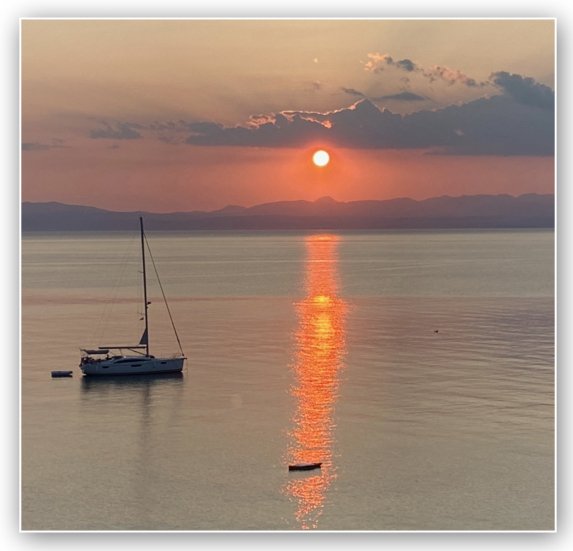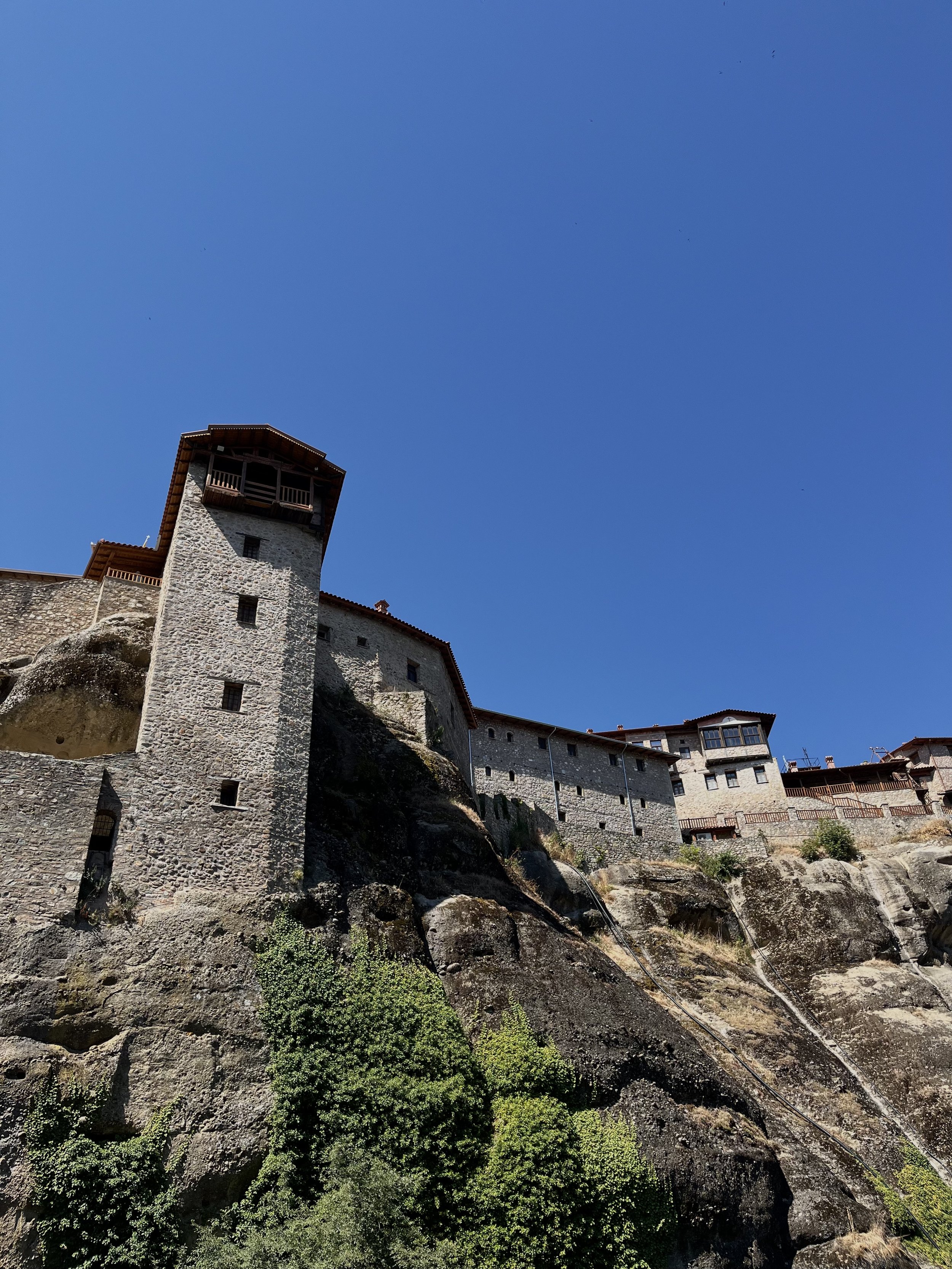High on Meteora
Matt Barret — the authority on all things Greece — says Meteora is “One of the most amazing places in Greece, if not the world…” After spending some time wandering around the place, I couldn’t agree more.
But words, and pictures, really can’t do it justice. As if the natural jaw-dropping beauty of the rock pinnacles isn’t enough, the ancient monks of Thessaly — in northern Greece — went ahead and crowned them with monasteries whose very existence defies belief.
I read that Meteora was given its name by Saint Athanasios, who founded the largest monastery — at one time there were something like 40 structures (today only six remain). The name means “suspended in air,” which couldn’t be more fitting — from certain perspectives, the wood and stone buildings seem to defy gravity, floating in the atmosphere like something out of a Roger Dean illustration for a “Yes” album cover.
My starting point for exploring Meteora was the town of Kalambaka, situated at the base of the cliffs. From there it’s only about a 3km drive to access all six monasteries, each on its own pillar of rock. You can also stay in the adjacent town of Kastraki. I spent 24 hours in the area, which was more than enough to see everything.
I arrived in the early afternoon after the 3.5-hour drive from Athens, grabbed a quick lunch, then headed up the road to my first stop — the Monastery of St. Nicholas Anapafsas. This one hovers at a lower altitude than all the others, but I found it one of the most difficult to access. From the parking area, it’s a fairly steep hike to the entrance, made all the more challenging by the mid-day heat.
As with all the monasteries, parts of St. Nicholas are off limits to visitors. But there’s more than enough to make it well worth the hike up (did I mention the mid-day heat?)….Walls lined with frescoes. Stunning views. Beautiful buildings crowned with terracotta tiles.
Side note — Meteora is a UNESCO World Heritage site and after decades of neglect, the Greek government has been working to restore the buildings. Judging by the old photos I saw while touring around, I’d conclude the monasteries never looked better than they do today.
After St. Nicholas, I made my way to the highest point on the road — and the largest monastery — the Great Meteoron, also known as the Holy Monastery of the Metamorphosis. From the parking area, it looks like a toy town, with its collection of buildings, towers and courtyards surrounding a church. Unfortunately, the Meteoron closed at 3PM that day, which was just about the time I arrived, so I decided to return after my morning hike on day 2 (more on that below).
The Varlaam Monastery is close to the Meteoron, so I hit that next, followed by the Rousanou Monastery, which is actually a nunnery. My final stop on that first afternoon was the St. Stephen monastery, also run by nuns.
Needless to say it was a whirlwind day and, to be honest, I was so enamored with the scenery, the artwork and the architecture, that it all kind of blended together. Each monastery has its own unique character but there are many similarities as well — all I can say is GO TO Meteora and experience it yourself.
After returning to my hotel, showering and getting ready for dinner, I drove back up the road to catch the sunset. No joke, that alone was worth the trip:
The Next Morning
When I checked in to my hotel, they said there was a hike up to one of the monasteries— Agia Triada. I decided to tackle that the next morning since it would be cool early in the day.
I trekked up to the outskirts of Kalambaka around 8:15 but couldn’t find the path. In my halting Greek I asked a couple of passersby and they pointed me in the right direction. «Σιγνομι, ξεριες που εινα το περπαταω στο βουνο;» or something like that.
As the path left town, it led me through a grove of olive trees, giving way to boulders and various species of wild flora. I remember being struck by the silence, occasionally broken by a dog barking in the village below, or the church bells ringing. (it was a Sunday).
At first the trail was well maintained and paved with cobblestones, but the higher I climbed, the rougher it got. In some places I needed to summon my inner goat to take on the crumbling steps and avoid tripping on exposed roots and loose stones.
Eventually the path emerged onto a road that led to a rock staircase leading up to the monastery. I was there before it opened and totally alone on the old steps. These gave way to a courtyard bordered with lavender, flowers, olive and cypress trees. Although it was too early to enter the inner sanctum, I was able to snap some photos of the spectacular outdoor space.
The word “magical” seems cliche but I can’t think of any other way to describe it. Not many people have heard of Meteora — even fewer have been to one of the sites without dodging hordes of Instagrammers and tour bus passengers.
After checking out of my lodgings, I drove back up to the Great Meteoron — a final stop before my 3-hour drive south to Delphi. Though crowded, it was worth the detour, and probably the most educational of all the monasteries. The museum on the site (no photos allowed) is full of artifacts, old scrolls, paintings and other objects that paint a picture of monastic life hundreds of years ago.
Meteora remains the second most important monastic community in Greece, after Mount Athos. But it’s far more accessible since women are forbidden on Mount Athos. Keep in mind that photography is not allowed in most of the interior religious spaces, men have to wear long pants and women, ankle-length skirts. If you visit in summer, when temps can easily exceed 90 F, this can be a trial. But it’s nothing compared to the sacrifices made by the Orthodox monks and nuns who’ve lived in this magnificent place for centuries.


























